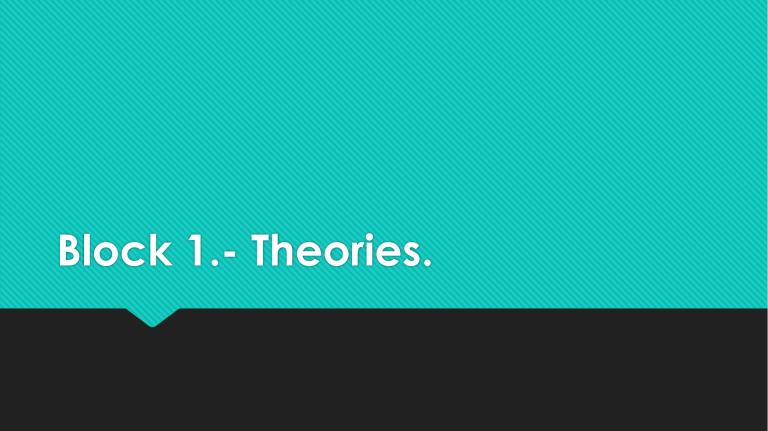
Block 1.- Theories. 1.- REALISM Main authors: Thucydides, “Peloponnesian war”. Hans Morgenthau, “Politics among nations” Main points: Community. Order and Stability: the authority. Balance of power: the military capabilities. Interest and justice. The example of R2P (Responsibility to Protect). Change. Change and modernization. RMA (Revolution of Military Affairs) Restoring order under a new paradigm: revolutionary moments and stability. 2.- Structural Realism Main authors: Kenneth Waltz and John Mearsheimer. Object: from power to Survival. Two schools: defensive realist. Waltz. Structural factors limit how much powers states can gain. offensive realist. Mearsheimer. System’s structure encourages States to maximize their power, to include pursuing hegemony. Five Assumptions Anarchic system. All states possess some offensive capability. Uncertainty. Main goal is survival. States are rational actors, though they can miscalculate. The security Dilemma. 2.1.- Defensive realism vs. Offensive Realism. Defensive: Strive for an “appropriate amount of power”. Effects of gaining power: Balancing. Offence-defense balance. Few hegemonic powers and no central wars. Offensive: Balancing is inefficient. Buckpassing. Offensive capabilities vs. Deterrence. 2.2.- The origins of war according to estructural realism. Four debates. Polarity of the system. Multipolarity, bipolarity or unipolarity. Central vs proxy wars. Balanced or imbalanced power. How much power each actor controls? Power shifts. Dynamics of the balance of power (also in its economic, political and social sides) Gaining-cost balance. Economic considerations of an offensive approach. Offence-defense balance. Defensive capabilities vs. Offensive capabilities as peace facilitators. 2.3.- Waltz and systems analysis. Kenneth Waltz. Main author of defensive neorealism. Main unit of analysis: State. Units in international society (States) behave in an anarchic way (pursuing their own interests). The causes interferring in international society are multiple. Methodology: Systems analysis. It mapps multicausal relations, their role regarding the main units or nodes, how they manage these inputs both in the internal interconections levels, and in the external level (outputs or results) 3.- Liberalism. Main author: Immanuel Kant. “Perpetual Peace Treaty”. Change of the object: from the State and power dynamics to society and moral role in cooperation. Three elements and problematic elements in the model: Democracy. Are there autocratic but stable countries? Economic exchanges. Are some elements of a country you have relations with can be considered also both threats and opportunity. Ex.- Spanish-Morocco relations. International Organization increasing number. They regulate a new area of power. The League of Nations vs. The mandate system. Interaction with internal stability. Model: the Kantian triangle. 3.1.- Neoliberalism . Debate neo-neo: approaching positions to neorealism. Anarchic international society. State as a center of gravity. Main authors: Keohane and Nye; Krasner. Three stages: Technological revolution. US stability period, economic terms, Breton Woods system. Institutions building (UN, IMF, WB) Communications revolution, globalization and blurred borders. Main current: institutionalism. Cooperation as form of coordinated self-interest between actors. Formal: institutions. Physical presence(human resources, physical headquarters, etc.) Informal institutions: International regimes. Norms, rules, procedures of behavior in international society. I.e.: Kyoto protocols. 4.- Structuralism. Marxist background. Call for class justice. Classes as main unit of study. Interaction between structure (Economy) and superstructure (ideology, politics, legal system) Influences: Dependency school (Henrique Cardoso). World system analysis (Wallerstein). Main themes: State and power. Institutions and world order. Inequality and justice. Identity and community. Conflict and violence. Peace and security. 5.- Constructivism. Alexander Wendt. “Anarchy is what states make of it”. Social construction as explaining model through language and construction of meanings. Constructed categories are not static but in continuous evolution Impact of language, identity, cultural background on international trends modelling. Relation with tools as marketing, propaganda, information operations, intelligence, et cetera.